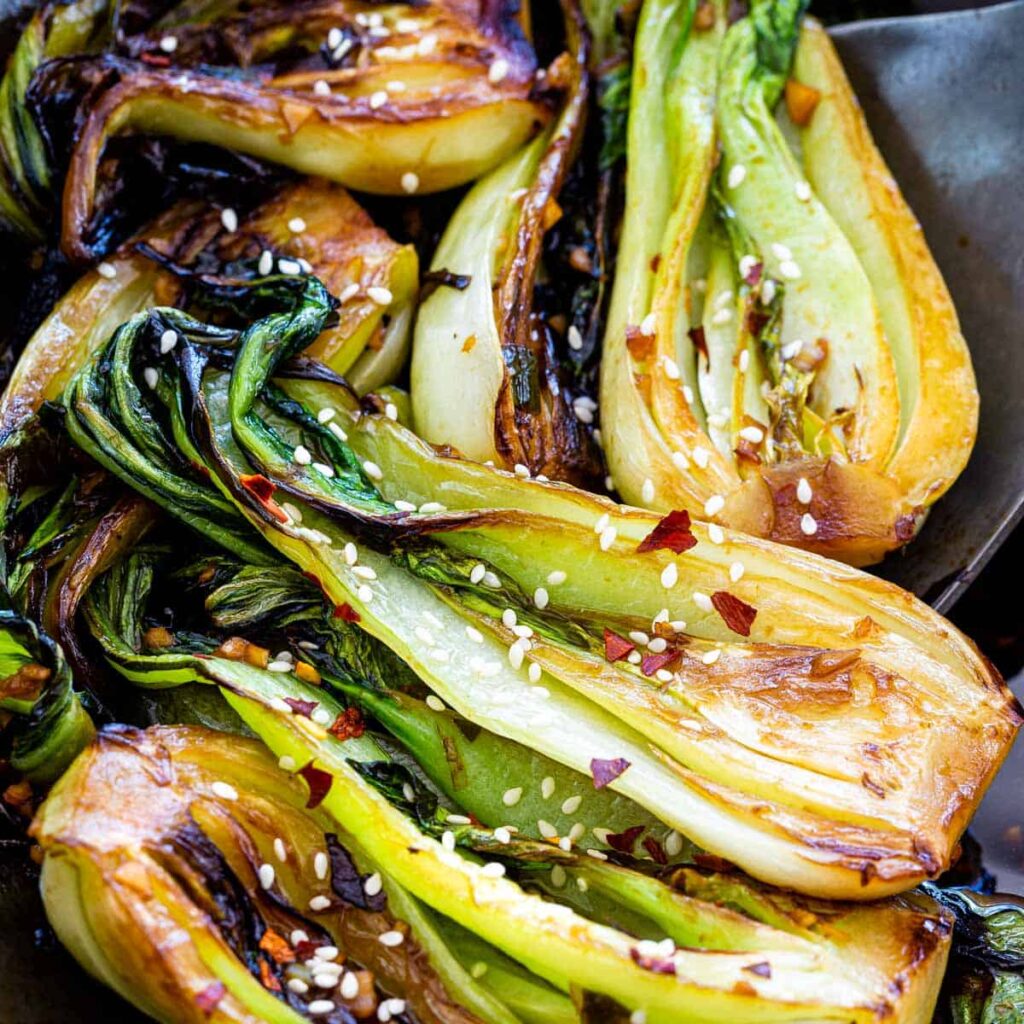Bok choy is a popular green leafy vegetable that is very prominent in Chinese cooking. While Chinese cooking does feature a lot of vegetables if you see a Chinese dish with a green leaf vegetable in it it is highly likely that is bok choy. Sometimes though inaccurately referred to as Chinese cabbage, bok choy or pak choi has a distinct taste, unlike regular cabbages. It does feature in many recipes and if you have not had the opportunity to taste it you may want to know what it does taste like.
Contents
What is Bok choy?
Bok choy is a green leaf vegetable of Southeast Asian origin that is part of the broader cabbage family. Unlike the traditional cabbages, we know bok choy does not form a bulb head. Instead, it has thick stalks attached to the plant and wide dark green leaves. Bok Choy is classified under the family of brassica Rapa that includes rape, kale and mustard greens. Bok choy in Cantonese translates to green vegetable in English. In the more popular Mandarin Chinese, it is called qing cai which translates to green vegetable. Bok choy is in the same family as cabbages and it shares many taste characteristics with them though it has a few surprises.
Mild
The first thing anyone who has tasted bok choy will say is that it has a mild flavour. Somewhat comparable to a cabbage variety like the drumhead which is very middle of the road when cooked without any additional flavour. Aside from the additional flavours bok choy, just like cabbage, can have its taste easily influenced by the method of cooking. Steaming, blanching and other light cooking methods will give you bok choy with a flavour that has a faint bitterness and or a slight peppery kick. You will find that when boiled or cooked in longer cooking processes these flavours become less pronounced though still present. The lightness of these flavour notes allows bok choy to easily blend into meals and that is perhaps one of the reasons it is such a popular vegetable in Chinese cooking. You will find bok choy in many standalone recipes as well as mixed into dishes.
Peppery Kick
A distinct characteristic of bok choy is its slight peppery kick. It has a peppery flavour similar to that of celery but nowhere near as powerful. This is one of the reasons you will find bok choy included in many recipes as it provides a subtle hint of pepper in any meal. When bok choy is flavoured with a strong herb like garlic this peppery kick is then amplified. This aspect of bok choy is most prevalent in recipes where the bok choy is lightly roasted or grilled. Unlike celery, it will not take over any dish. It is mild that can easily be mistaken for other ingredients in a mixed recipe.
Faintly Bitter
Some have described bok choy as having a faintly bitter taste which comes through as an after taste. The closest vegetable that can be likened to bok choy in this regard is the Swiss Chard. Swiss chard is a green leaf vegetable that looks so much like spinach in many places it is sold as spinach but it is very far from spinach. Spinach has rounded leaves with a thin stalk while Swiss Chard has thick stalks and curly leaves. Swiss chard has a similar flavour to bok choy though it is much more subtle in bok choy. The same quality makes both vegetables great for seasoning or flavouring with strong herbs such as garlic or even regular onions. While there is a hint of bitterness it should be noted that it is nowhere near as pronounced as in mustard greens which can pack quite a punch. The bitterness in bok choy is only a hint and not enough to put someone off enjoying it.
Bitter Mineral Tingle Flavour
So far we’ve focused mostly on the flavour in the leaves but bok choy is consumed leaf and stem like many other vegetables in its family. Bok choy much like spinach has a lot of flavour in the leaf but not as much in the stalks. The stalks of bok choy have a bitter mineral tingle flavour to them. However, the hint is very light. In addition to that the leaves and stems are usually consumed at the same time so many would attribute the mineral flavour to the whole plant but it comes from the stalks and stems of the plant. Contrast this with celery which has concentrated flavour in the stalks as compared to the leaves. These are only subtle flavours which are more pronounced when the vegetable is raw and blend in when it is cooked.
Stalks
Another characteristic of bok choy is the texture of the stalks. In recipes where it is lightly cooked bok choy stalks will be quite crunchy. These stalks are somewhere between the crunchiness of swiss chard and celery stalks. The watery nature of the stalks is not an issue in cooking, many times you will see bok choy in recipes that have a lot of soup or water in them. In terms of just how watery the stalks are it is best likened to Spinach or Swiss chard. Both these vegetables have stalks that are firm and watery. They do not ooze water but have a lot of moisture in them. The crunch is lighter than celery stalks.
Bok choy is not very hard to place on a taste scale. Its flavour can be best be described as the meeting place of Swiss chard and the drumhead cabbage.




